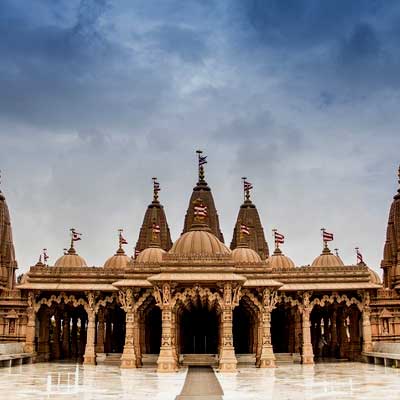Rajkot: Unveiling Gujarat's Cultural Hub and Historical Legacy

Thakore Sahib Vibhoji Ajoji Jadeja's leadership resulted in the establishment of one of Gujarat's youngest empires, Rajkot. A descendant of the Jamnagar Royal Family in 1620 AD, he named Rajkot after its co-founder, Raju Sandhi. In 1720 AD, Masum Khan, the leader from Junagadh, besieged Rajkot, fortifying it with defensive strategies that included eight fortified gates topped with iron spikes and 8-foot-thick walls.
By 1807, the British took control of Rajkot, leading to significant cultural, artistic, and educational developments. The region birthed several iconic freedom fighters, inspiring the local youth towards independence.
Rajkot offers a range of attractions suitable for all ages, from parks and gardens to museums. Noteworthy sites include Kerba Gandhi no Delo, where Gandhi spent part of his life, and the prestigious Rajkumar College, established in 1870. The city's colonial past is echoed in its 19th-century architecture. The Watson Museum features tribal artifacts, portraits, and archaeological finds from Harappan sites, including a large statue of Queen Victoria. Other significant sites include Rashtriya Shala, Shri Swami Narayan Temple, Lady Wilson Museum, Radha Krishna Temple, Shri Sai Baba Temple, and the Rotary Dolls Museum.
Rajkot's vintage charm and culinary offerings continue to attract visitors. The city is known for its Gujarati cuisine, best enjoyed in its quieter spots. Known as a promising urban center in Saurashtra, Rajkot effectively blends historical and modern influences, making it a model city in Gujarat. Plan a day tour with your family to explore Rajkot’s diverse attractions.
Climatic Condition:
Unlike the more humid Rajasthan, Rajkot's monsoon season is quite pleasant. The best time to visit is during the cooler months from October to March.
Travel Mode:
Rail: Rajkot Junction, also known as Central Railway Station, offers excellent train connectivity with major Indian cities.
Air: International travelers often fly into Mumbai due to frequent connections to Rajkot, which also has a domestic airport linking to various Indian cities.
Road: Travelers from Ahmedabad frequently choose road transport to reach Rajkot, thanks to the well-maintained roads.
FAQs:
What is the history of Rajkot?
Founded in 1620 AD by Thakore Sahib Vibhoji Ajoji Jadeja, Rajkot was fortified against sieges and later influenced by British rule from 1807, fostering cultural and educational advancements.
What are the top attractions in Rajkot?
Key attractions include Kerba Gandhi no Delo, Rajkumar College, Watson Museum, Rashtriya Shala, Swami Narayan Temple, Lady Wilson Museum, and several historic temples and museums.
What makes Rajkot a cultural hub?
Rajkot blends historical architecture with modern influences, offering insights into Gujarat's heritage through its museums, colonial-era buildings, and vibrant culinary scene.
When is the best time to visit Rajkot?
The best time to visit Rajkot is from October to March, avoiding the summer heat and enjoying pleasant weather ideal for exploring the city's attractions.
Why visit Rajkot with family?
Rajkot offers diverse attractions suitable for all ages, including parks, museums, temples, and cultural landmarks, making it an enriching destination for family tours.